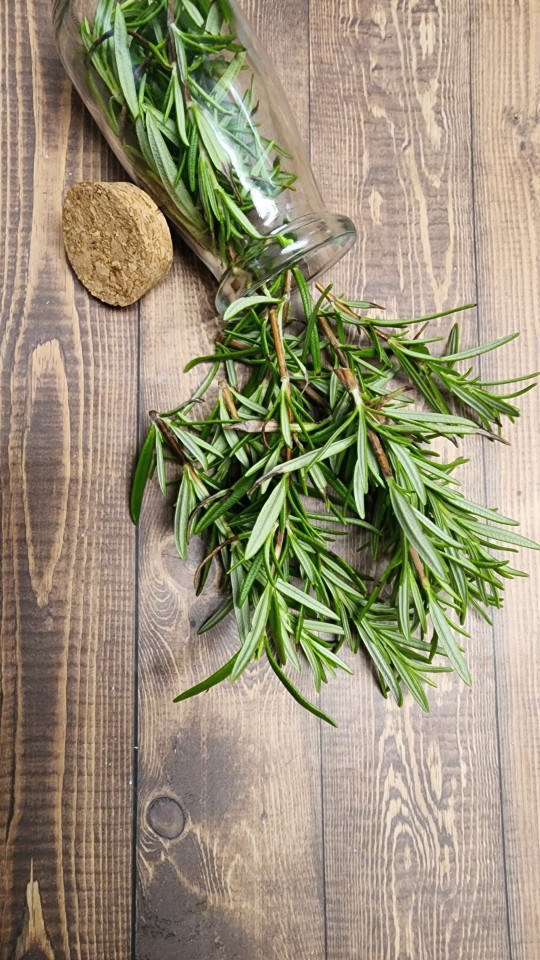#lamiaceae in family
Explore tagged Tumblr posts
Text
Coleus plant






0 notes
Text
Coleus plant





0 notes
Text
Coleus plant





0 notes
Text
Coleus plant





0 notes
Text
Lamiagirl drinking a mint tea: this just feels natural to me for some reason!
#why the fuck is it called lamiaceae??#the etymology is completely orphaned#probably some equivalent of calling aomething witches nettle and eventually just called its family the 'witch family' but ugh#botany is frustrating sometimes#girl
12 notes
·
View notes
Text
lavender, catnip, and eucalyptus are all mints
10 notes
·
View notes
Text
Put peppermint oil on my hair last night to get out elastics and was woken at 5:30 to my cat shoving her tiny face into my hair and drooling with desperate might (peppermint is a relative of catnip)
#they are both in the lamiaceae family (source: did a presentation on this last month)#also dunno why peppermint oil works to snap those shitty tiny elastics but it does#me
2 notes
·
View notes
Text
Monarda Didyma - Scarlet Bee Balm
Native
Mint Family (Lamiaceae)


Notes: Got these bare roots this year but this one decided to throw up blooms kind of out of season but whatevs. Also getting that multi-tiered habit from the blooms that's common for the spotted bee balm. Excited to see how well these do and to eventually use the leaves. Slightly more pink than I was expecting which makes me curious if it's a straight species or some kind of cultivar. Didyma's so hard to acquire though and this one is doing well so I can't be mad.
#Monarda Didyma#Scarlet Bee Balm#Lamiaceae#Mint Family#Native#In yard#I planted this#Planted 2024#Red#July#Illinois Native Plant#z18
0 notes
Text
what stage of depression is staring at wikipedia articles and not really reading them
#just like leaning against them going oh family of flowering plants lamiaceae we're really in it now#sun.txt
0 notes
Text
Coleus plant





0 notes
Text

Immigrating in adulthood means that I get the exciting experience of being surprised by life around me. I didn’t grow up with them, you see.
Yesterday the surprise came in the form of a moth the size of a thumbnail. I was hanging up laundry when I saw it - the first impression was a small fly, with a dense quickness and buzz. I could identify “moth” by its gestures, but I was enchanted by the brilliance of the graphic design - the sweet velvety purple-brown color set against the bright gold - and the gratified, lavish attention it was paying to my variegated oregano. It was tremendously excited by some mysterious property of that oregano. I mean, I get it too, but I hardly ever do an interpretive dance on it. It reminded me of a cat romping on a fresh catnip plant.
After research, I was happy to meet the MINT MOTH or SMALL PURPLE AND GOLD, which just goes to show that moth-namers - more than any other natural historians - understand the assignment. They give you two choices, both good, both descriptive, and conveying the essential character. Trustworthy folk, your moth people. My moth-fancying friend, who goes out of her way to meet new moths, has a Facebook album called Much Ado About Mothing and goes to local mothing meetings, sometimes posting the minutes, which only reinforces my take here; these people are trustworthy, diligent hands to place problems in.
I like the Linnean name too: Pyrausta aurata, the ‘aurata’ meaning gold-adorned, gilded; and Pyrausta possibly being a reference to a Greek mythological insect, which is exciting because you don’t get many mythological insects. but you’d better research that for yourself, as I didn’t see a single source I liked very much.
And best of all I liked the description of its habits. The Mint Moth loves mint and marjoram, and is a delightfully common visitor in gardens that grow these. In the wild, it follows watermint and wild marjoram. These plants form forage for its polite caterpillars, who barely affect the host plants at all. And if you have a garden in the uk with mint and marjoram, a very tiny creature the size of a thumbnail may come and roll around in it.
Now, I have mint and marjoram - but it really wanted that oregano, which was interesting to think about - something worth exploring and understanding better, even though it isn’t the food source of its caterpillars. Oregano is a member of the Lamiaceae family, which mint and marjoram belong to, so it clearly has something that mint moths like; and even though the marjoram is right next to it, it was clearly worthy of deep mothy investigation. Who knows what’s in the mind of a moth! I hope if any caterpillars emerge from this little dance, they’re happy with eating oregano…
Hurray for little visitors who bring surprises.
649 notes
·
View notes
Text

Rosemary
Rosmarinus officinalis
Known as: compass weed, dew of the sea, elf leaf, guardrobe, incsensier, labonotis, Mary's cloak, polar plant, sea dew, stella maria & star of the sea.
Related plants: A member of the mint family Lamiaceae that includea basil, mint, sage, savory, marjoram, oregano, hyssop, thyme, lavender & perilla. As well as other herbs such as catnip, salvia, bee balm, wild dagga, and oriental motherwort.
Parts used: Leaves, roots, sprigs & essential oils from the flowers.
Habitat and cultivation: This evergreen shrub is native to the Mediterranean Portugal, and northwestern Spain.
Plant type: Perennial
Region: Zone 6 with occasional winter protection & zones 7-10
Harvest: Anytime but avoid taking more than 1/3 of the plant when you do.
Planting tips: Rosemary has a low germination rate and slow to sprout, try using cuttings or buy from a nursery if you have problems. Keep in full sun with a well drainer container & let the soil dry out completely before watering again.
Medicinal information: Over the years rosemary was used to relieve muscle pain, repelling insects, improve memory, boost the immune system & promote hair growth.
Cautions: While safe, ingesting excessive amounts of rosemary can be dangerous and lead to vomiting, coma & pulmonary edema.
ROSEMARY IS NOT A SUBSTITUTE FOR EVERY HERB
Magickal properties
Gender: Masculine
Planet: Sun
Element: Fire
Deities: Faeries, Elves, sea spirits & Virgin Mary
Magickal uses:
•Place in dream pillows to prevent nightmares
• Burn as an incense to purify & remove negativity
• Hang above your doorways to drive away unwanted visitors
• Add to a ritual bath for cleansing & removing hexes
• Use as a substitute for frankincense
• Plant in your garden to attract fae
• Carry a sprig to protect against the evil eye
• Keep under your bed to ensure fidelity & a happy relationship
• Wash your hands with a rosmary infusion before healing magick to increase potency
• Wear in a satchet or amulet to improve memory recall & improved health
• In Italian folk magic, it is cooked with to alleviate sadness grief
• Rosemary may be used as incense at rituals of death and dying. It may be cast upon the coffin when it is slowly lowered into the burial place. With this we will all remember with love and fondness the one who is passing into another life, and thus we will also remember that we inhabit mortal bodies as we walk through the earth
#herb of the week#herbalism#rosemary#magical herbs#witchblr#wiccablr#paganblr#witch community#witchcraft#witchcore#witch tumblr#spells#grimoire#book of shadows#spellbook#baby witch#beginner witch#witch tips#correspondence#green witchery#GreenWitchcrafts#spellwork#beginner witch tips#baby witch tips#green witch#witches of tumblr#witch#witchyvibes#witchy things#herbs
233 notes
·
View notes
Text
'Tism won again! 🎉
Re:that post about invasive mints and the addition about outcompeting them with related plants, you can look up native lamiaceae species if you're still worried about replacing one invasive species with another! If you live in the USA, uswildflowers.com lets you search by state, and if you wanna narrow your search results even more, look up [plant family] native to your ecoregion!

There are different-level ecoregional maps for each state too--

--and some species only occur in the wild within unique subregions. For example, there's a Brazos mint, or rattlesnake flower, that only grows in sandy soil within the post oak belt in Texas, and the post oak savannahs only show up within the east central Texas plains on a level IV-inclusive map.
And I dunno about anyone else, but there's something special about meeting some of your more exclusive neighbors.
#mint#lamiaceae#invasive species#native plants#ecoregion#environmentalism#gardening#media#website#tldr#etc
361 notes
·
View notes
Text


Salvia chamaedryoides
Salvia is a very large genus in the Lamiaceae, or Mint Family, and the various species differ greatly in their drought tolerance, their cold tolerance, their flower color, and their size. Salvia chamaedryoides is on the small side (up to a foot and a half tall, or 46 cm), with good drought tolerance and able to endure winter lows down to about 10° F (-12° C). Its very pale leaves and beautiful blue flowers make it a garden standout. From the Chihuahuan Desert region in northeastern Mexico.
-Brian
25 notes
·
View notes
Text
549 notes
·
View notes
Text

cross stitch bookmark of some lavender, made from a kit I bought last weekend !! did you know that lavender is in the lamiaceae family, making it closely related to a bunch of different herbs like mint, catnip, and basil?
16 notes
·
View notes